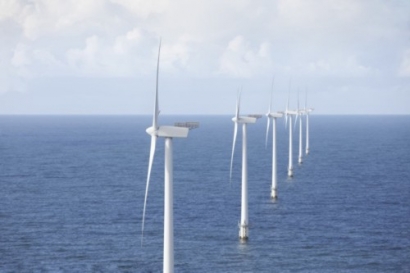
Commercial HVDC technology was pioneered by ABB more than 60 years ago. It is a highly efficient alternative to alternating current (AC) for transmitting large amounts of electricity with higher efficiency and lower electrical losses. HVDC contributes to the secure and stable transmission of power across networks that operate on different voltages and frequencies. This makes the technology suitable for many key power applications, enabling the integration of renewable energy from offshore wind farms and interconnections with AC networks
In the first ever use of the HVDC technology in the UK’s offshore wind market, ABB will supply technology with one of the smallest environmental footprints, due to the compact station design combined with the lowest energy losses in the power industry. ABB will supply the HVDC Light converter systems, while Aibel will deliver two HVDC offshore converter platforms. In 2016, ABB and Aibel announced their partnership on the design, engineering and optimization of offshore wind connections.
“Winning the contracts from SSE Renewables and Equinor for the landmark Dogger Bank project underscores ABB’s innovative offshore wind technology and expertise. It also highlights the success of ABB Power Grids’ customer partnerships, both on design optimization as well as on the business model level,” said Claudio Facchin, President of ABB’s Power Grids business.
The Dogger Bank development consists of three wind farm projects – Creyke Beck A and B, and Teesside A. It will significantly contribute towards the UK government’s goals of sourcing up to a third of its electricity from offshore wind by 2030. ABB has been awarded contracts for Creyke Beck A and Creyke Beck B.
Halfdan Brustad, Vice President for Dogger Bank at Equinor, said, “This is an important milestone for Dogger Bank with a groundbreaking HVDC technology solution enabling a competitive solution for offshore wind at a long distance from shore. This will be the first offshore HVDC solution in the UK which opens up new markets and opportunities.”
According to the International Energy Agency, global offshore wind capacity may increase 15-fold and attract around $1 trillion of cumulative investment by 2040. This is driven by increased competitiveness, supportive government policies and some remarkable technological progress.

